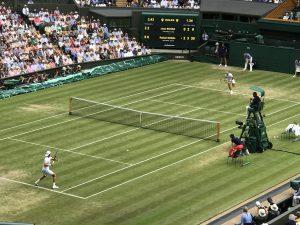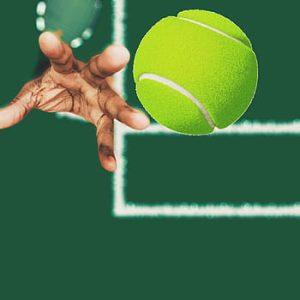We may earn money or products from the companies mentioned in this post.
Introduction

Table tennis, also known as ping pong, is a fast-paced and exhilarating sport enjoyed by millions of players worldwide With its origins dating back to the late 19th century, table tennis has evolved into a competitive and strategic game that requires skill, agility, and precision One essential aspect of the game is the choice of the right ball In this article, we will explore the fascinating history of table tennis and delve into the importance of selecting the correct ball for optimal gameplay
Brief History of Table Tennis
The origins of table tennis can be traced back to Victorian England in the late 1800s Initially played as an after-dinner parlor game among the upper class, it quickly gained popularity due to its accessibility and entertaining nature The rules were simple: players used books or cigar box lids as paddles to hit a rounded cork ball across a makeshift net made from books
As time passed, improvements were made to both equipment and rules In 1901, Englishman James Gibb invented celluloid balls to replace cork ones, providing better bounce and speed This innovation revolutionized the game and led to its rapid spread across Europe
Evolution of Table Tennis Balls
The development of table tennis balls has come a long way since James Gibb’s invention in 1901 The transition from cork to celluloid marked a significant milestone in improving gameplay dynamics and durability
In recent years, there have been further advancements in ball design with the introduction of plastic balls as replacements for celluloid ones Plastic balls offer enhanced consistency in terms of weight, size, and spin response This evolution has not only improved overall performance but also increased durability during intense matches
Importance of the Right Ball in the Game

Choosing the right table tennis ball is crucial to ensure an enjoyable and competitive playing experience The ball’s characteristics can greatly influence gameplay, including speed, spin, bounce, and control
Effects on Gameplay and Performance
The choice of ball can impact the pace and spin potential of shots Different balls vary in terms of hardness, which affects how much spin a player can impart on the ball Harder balls tend to produce more speed but offer less spin control, while softer ones allow for greater spin manipulation but at reduced speeds
Furthermore, the weight and size of the ball affect its bounce characteristics Heavier balls tend to have a stronger bounce, making them suitable for players who prefer power shots On the other hand, lighter balls provide better control for finesse-based players who rely on precise placement and delicate touches
Regulations and Standards
To maintain fairness and consistency across professional competitions, international governing bodies such as the International Table Tennis Federation (ITTF) have established regulations and standards for table tennis balls These guidelines define parameters such as weight (27 grams), diameter (40mm), color (white or orange), and performance properties
Compliance with these standards ensures that players compete under equal conditions, allowing their skills to shine without any unfair advantages or discrepancies in equipment
In conclusion,
Materials used in making table tennis balls

When it comes to the materials used in making table tennis balls, there are two main types that have been widely utilized over the years These materials are celluloid and plastic (poly). Each material brings its own set of properties, advantages, and considerations to the table
Celluloid balls
1 Composition and properties
The traditional choice for table tennis balls, celluloid is a highly flammable material made from nitrocellulose and camphor While it offers excellent bounce and spin capabilities, it does come with some safety concerns due to its flammability
However, celluloid has long been known for its exceptional performance characteristics compared to other materials It provides players with a good balance of control, speed, and spin, allowing for exciting gameplay on the table
From an environmental perspective, the use of celluloid raises sustainability concerns as it relies on non-renewable resources like petroleum in its production process
2 Manufacturing process for celluloid balls
The manufacturing process of celluloid balls involves molding the material into spherical shapes using specialized machinery The nitrocellulose and camphor mixture is melted down and poured into molds before being cooled and trimmed to achieve precise dimensions
Plastic (Poly) balls (40+)
1 Composition and properties
In recent years, plastic (poly) balls have gained popularity in the world of table tennis These modern balls are typically made from polyethylene or ABS (Acrylonitrile Butadiene Styrene), offering improved durability compared to their celluloid counterparts
The introduction of plastic balls has brought about noticeable differences in performance when compared to celluloid balls Plastic balls tend to have a slightly different bounce, spin, and speed characteristics Players often need to adapt their playing style to accommodate these changes
Professional players have gradually adapted to the use of plastic balls, with adjustments made to their techniques and strategies The new material has prompted players to develop innovative ways of generating spin and controlling the ball effectively
Overall, both celluloid and plastic (poly) balls have played significant roles in the evolution of table tennis While celluloid balls have a long-standing history and exceptional performance, plastic balls offer improved durability and present new challenges for players As the sport continues to grow and evolve, it will be interesting to see how materials further impact table tennis gameplay
Quality Control Measures for Table Tennis Balls: Standards & Ratings

A: ITTF Regulations
The International Table Tennis Federation (ITTF) has established a set of regulations to ensure the quality and consistency of table tennis balls These regulations cover various aspects, including size, weight, sphericity, seamlessness, and color requirements
1 Official Size, Weight, Sphericity & Seamlessness Requirements
To meet ITTF standards, table tennis balls must have a specific diameter of 40mm Additionally, they should weigh between 27 and 28 grams to ensure proper balance during gameplay Sphericity refers to the roundness of the ball’s shape, and ITTF mandates that it should be within a certain tolerance level Furthermore, the seamless design ensures fair play by minimizing any irregular bounces or spins
2 Color Requirements
The ITTF also regulates the color of table tennis balls Traditionally, white was the standard color used in professional tournaments However, in recent years, orange-colored balls have been introduced as an alternative for better visibility on TV broadcasts or under specific lighting conditions
B: Star Rating System
In addition to ITTF regulations, table tennis balls are often rated using a star rating system that indicates their quality and intended use
1 One-Star Balls – Recreational Play
One-star rated balls are typically designed for recreational play or beginners’ practice sessions Although they may not meet all the stringent requirements set by the ITTF for professional play, they still provide sufficient durability and performance for casual games at home or in recreational settings
2 Two-Star Balls – Training Purposes
Table tennis balls with a two-star rating are suitable for training purposes They offer better quality and consistency compared to one-star balls, making them ideal for players who want to sharpen their skills and improve their techniques
3 Three-Star Balls – Tournament/Professional Play
The highest rating, three-star balls, are reserved for tournament use and professional play These balls meet all the strict requirements set by the ITTF and ensure optimal performance in terms of bounce, spin, and durability They are specifically designed to meet the demands of competitive table tennis matches at the highest level
In summary, quality control measures for table tennis balls encompass both ITTF regulations and star ratings By adhering to these standards, manufacturers can ensure that players experience consistent gameplay and enjoy a fair competition while using high-quality table tennis balls
Conclusion

In conclusion, the future of table tennis ball manufacturing technology is promising The industry is constantly exploring new materials and innovations to enhance the performance and durability of the balls Manufacturers are focused on creating lighter yet more durable materials that can withstand intense gameplay without compromising on quality
Additionally, there is a strong emphasis on improving consistency in ball manufacturing With advancements in technology, manufacturers aim to produce balls that have consistent bounce and spin characteristics, allowing players to have a fair and level playing field
When it comes to choosing the right table tennis ball for your needs, several considerations come into play Firstly, you need to evaluate your performance expectations Are you a beginner looking for a recreational ball or an advanced player who requires professional-grade equipment?
Environmental impact is another crucial aspect to consider when purchasing table tennis balls As sustainability becomes increasingly important, opting for eco-friendly options such as biodegradable or recycled materials can help reduce waste and minimize environmental footprint
Lastly, price versus quality trade-offs should be taken into account While high-quality balls may come at a higher cost, they often offer better performance and durability in the long run It’s important to strike a balance between affordability and functionality based on your needs and preferences
Useful Links

The Evolution of the Ping Pong Ball
Best table tennis balls 2018
The transition from celluloid to plastic balls
Did ping pong exist before the invention of plastic? What …
Table tennis ball with a completely seamless structure
Table Tennis Balls Part 1 – Manufacturing
It’s Fascinating to Watch How Ping Pong Balls Are Made
STIGA 1 Star Ping Pong Balls | 144 Pack
Guide to Choosing Table Tennis Balls
What Does 40+ Mean On Ping Pong Balls? – The Racket Life
TSP Three Star 40+ Plastic Poly Table Tennis Ball
What Are Ping Pong Balls Made Of?
Are Ping Pong Balls Made Out Of Plastic? – Get More Spin!
Table Tennis Balls – THE VILLAGES …
Table tennis
Table Tennis Balls For All Kinds Of Players
Champion Sports Tournament 3 Star Table Tennis Balls …






